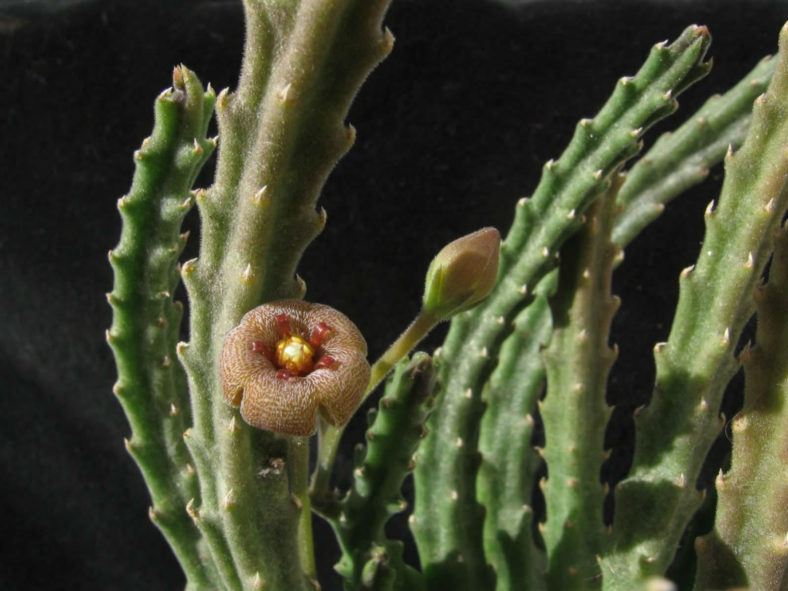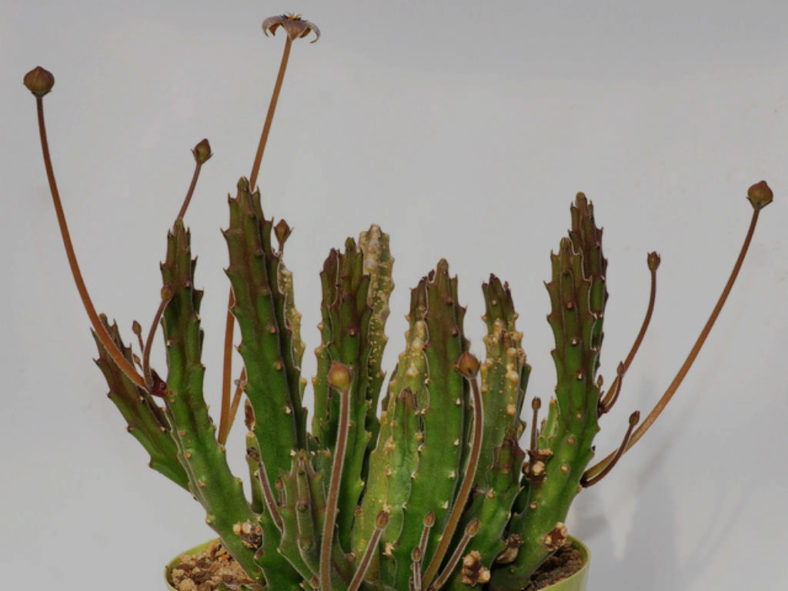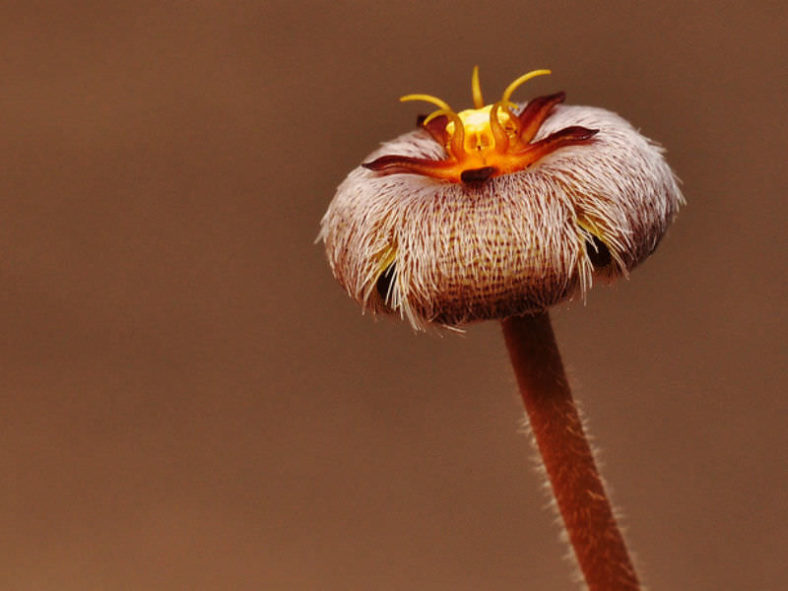Scientific Name
Stapelia erectiflora N.E. Br.
Synonym(s)
Stapelia erectiflora var. erectiflora, Gonostemon erectiflorus
Scientific Classification
Family: Apocynaceae
Subfamily: Asclepiadoideae
Tribe: Stapeliae
Genus: Stapelia
Etymology
The specific epithet "erectiflora" (pronounced "e-rek-tih-FLOR-a") means "having upright flowers" and refers to the upright positioning of the flowers of this species.
Origin
Stapelia erectiflora is native to South Africa (Western Cape and Northern Cape).
Description
Stapelia erectiflora is a small succulent that forms a clump of dull green, 4-ribbed stems with small, conspicuous teeth and erect, rudimentary leaves. The stems are upright, decumbent at the base, and can grow up to 7 inches (17.5 cm) long and 0.4 inches (1 cm) thick.
The flowers appear on erect stalks along the stems, often several on the same stem in fall. The flower stalks can grow up to 2 inches (5 cm) tall. The flowers are brownish-green to purplish, with transverse stripes and short white hair. They can reach a diameter of up to 0.4 inches (1 cm).

Hardiness
USDA hardiness zones 10b to 11b: from 35°F (1.7°C) to 50°F (10°C).
How to Grow and Care
Several species are relatively easy to grow. Others, often those with slightly hairy stems and the more unusual flowers, are more challenging and require careful watering (with some fertilizer) during the growing season and complete water withdrawal during the winter months. A minimum winter temperature of 10°C (50°F) is acceptable, provided that plants are kept dry. A heated, growing bench or incubator can help delicate plants survive the colder months. However, many species live under shrubs in their habitat and prefer light shade rather than full sun.
A gritty succulent soil mix is essential, and clay pots are advisable for the more delicate species. Some growers prefer mineral-only soil to minimize the chance of a fungal attack on the roots. A layer of grit on the soil's surface prevents moisture from accumulating around the base of stems.
Keeping Stapelias and their roots free of pests such as mealybugs is the real key to success, as fungal attack often occurs due to damage to stems by insects.
Learn more at How to Grow and Care for Stapelia.
Links
- Back to genus Stapelia
- Succupedia: Browse succulents by Scientific Name, Common Name, Genus, Family, USDA Hardiness Zone, Origin, or cacti by Genus
Photo Gallery
Click on a photo to see a larger version.

